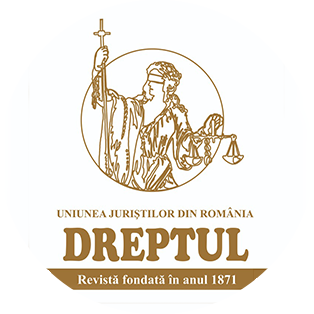-
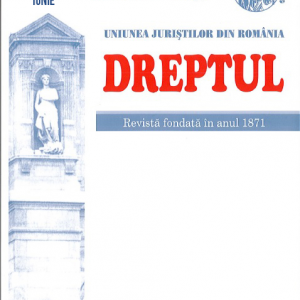 The above study examines the issue of the articles of association and the nullity of the legal entity in the new Romanian Civil Code (adopted by the Parliament, published in the “Official Journal of Romania”, but not yet effective). In dealing with the above-mentioned issue, the author examines the nullity of a company’s articles of association (in Law no. 31/1990 on companies and in the new Civil Code), the effects of a company’s nullity, the legal entity’s nullity – in the current law and in the new Civil Code –, the effects of the legal entity’s nullity, as well as the European source of the legal entity regulation in the new Civil Code (Directive 2009/101/EC, a directive abrogating and replacing the Directive 68/151/EEC).
The above study examines the issue of the articles of association and the nullity of the legal entity in the new Romanian Civil Code (adopted by the Parliament, published in the “Official Journal of Romania”, but not yet effective). In dealing with the above-mentioned issue, the author examines the nullity of a company’s articles of association (in Law no. 31/1990 on companies and in the new Civil Code), the effects of a company’s nullity, the legal entity’s nullity – in the current law and in the new Civil Code –, the effects of the legal entity’s nullity, as well as the European source of the legal entity regulation in the new Civil Code (Directive 2009/101/EC, a directive abrogating and replacing the Directive 68/151/EEC). -
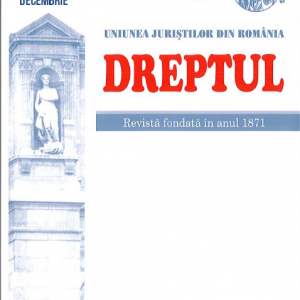 Promoting the conception according to which material evidence should be exclusively reserved for civil procedure as evidence is fulfilling its main role in trial, the author stresses that the new Civil Code achieves the unification of evidence regulation in civil matters, by including this regulation in art. 243-382 of the new Civil Code, a salutary solution, in accordance with the majority opinion of the doctrine. The Legislator, based on the new Civil Code, preserves part of the evidence regulations of the previous Code, but also embracing solutions adopted in the Civil codes of other states, such as, for example, the French, the Canadian province of Quebec or the Swiss Civil Code. Of course, the new Civil Code includes innovative solutions that the author deems useful and necessary, such as those relating to admitting as evidence documents stored on computer media or those regarding material means of evidence.
Promoting the conception according to which material evidence should be exclusively reserved for civil procedure as evidence is fulfilling its main role in trial, the author stresses that the new Civil Code achieves the unification of evidence regulation in civil matters, by including this regulation in art. 243-382 of the new Civil Code, a salutary solution, in accordance with the majority opinion of the doctrine. The Legislator, based on the new Civil Code, preserves part of the evidence regulations of the previous Code, but also embracing solutions adopted in the Civil codes of other states, such as, for example, the French, the Canadian province of Quebec or the Swiss Civil Code. Of course, the new Civil Code includes innovative solutions that the author deems useful and necessary, such as those relating to admitting as evidence documents stored on computer media or those regarding material means of evidence. -
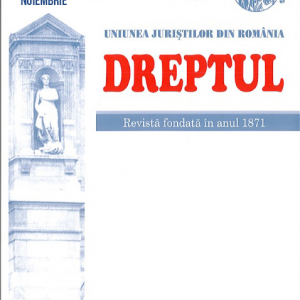 The article approaches the offence of “patrimonial exploitation of a vulnerable individual” under the provisions of Article 247 of the new Criminal Code. On these lines, the author conducted a thorough review of its legal content and highlighted issues of procedural nature. Likewise, there are also expressed critical opinions on how the legislature sought to regulate the offence’s conditions of existence, likely to severely limit its factual scope thereof.
The article approaches the offence of “patrimonial exploitation of a vulnerable individual” under the provisions of Article 247 of the new Criminal Code. On these lines, the author conducted a thorough review of its legal content and highlighted issues of procedural nature. Likewise, there are also expressed critical opinions on how the legislature sought to regulate the offence’s conditions of existence, likely to severely limit its factual scope thereof. -
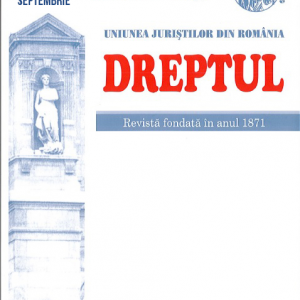 The author considers, in this study, that, in case of medical malpraxis in the public health system, it is the Romanian state which has patrimonial liability to the victim patient (through the medical service provider – public institution), according to the Administrative Dispute Law no. 554/2004, and the doctor in default (employee of the medical service provider) shall have a patrimonial liability to such provider (his/her employee), as set forth by article 270 et seq. of the Labor Code.
The author considers, in this study, that, in case of medical malpraxis in the public health system, it is the Romanian state which has patrimonial liability to the victim patient (through the medical service provider – public institution), according to the Administrative Dispute Law no. 554/2004, and the doctor in default (employee of the medical service provider) shall have a patrimonial liability to such provider (his/her employee), as set forth by article 270 et seq. of the Labor Code. -
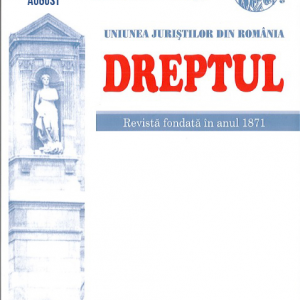 With the view to overcome the lack of celerity in the conduct of criminal trials, the initiators of the new Code of Criminal Procedure explicitly intended to depart from the extraordinary remedy of appeal for annulment. However, although the code was adopted under the Government’s liability, the legislature has maintained this opportunity to repair final criminal judgments affected by errors. Code’s editors have thought abandon of the litigious remedy, transferring its role and cases of its raising to other extraordinary remedies. But the author points out that the experiment has not been designed fully rigorously, so that a number of hypothetical situations, consistent enough, remained outside the cases provided by law for the performance of extraordinary review procedures. Under the new code system, the appeal for annulment was integrated in a chapter distinct from the review procedures chapter, i.e. after the appeal, as an emphasis on the concept of being within reach of the parties to pursue against final judgments passed in the court of this relevant resort.
With the view to overcome the lack of celerity in the conduct of criminal trials, the initiators of the new Code of Criminal Procedure explicitly intended to depart from the extraordinary remedy of appeal for annulment. However, although the code was adopted under the Government’s liability, the legislature has maintained this opportunity to repair final criminal judgments affected by errors. Code’s editors have thought abandon of the litigious remedy, transferring its role and cases of its raising to other extraordinary remedies. But the author points out that the experiment has not been designed fully rigorously, so that a number of hypothetical situations, consistent enough, remained outside the cases provided by law for the performance of extraordinary review procedures. Under the new code system, the appeal for annulment was integrated in a chapter distinct from the review procedures chapter, i.e. after the appeal, as an emphasis on the concept of being within reach of the parties to pursue against final judgments passed in the court of this relevant resort. -
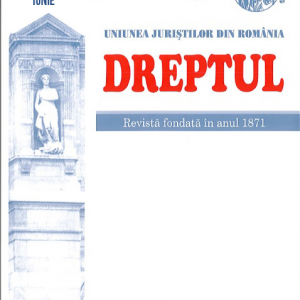 Examining the issue of the parents’ right to agree to their child’s journey in the country (in Romania) or abroad, after reviewing the legal regulations in this matter, the author reaches the conclusion that art. 18, paragraph 2 of Law no. 272/2004 (“Any journey made by children in the country and abroad shall be made subject to notification and consent of both parents; any disagreements between the parents in relation to expressing such consent shall be solved by the court of law”) provides for situations in which the parents exercise their parental rights together, while art. 30, paragraph 1, letter c of Law no. 248/2005 refers to the situation in which parental protection is divided pursuant to a court order (following divorce etc.). At the end, the author proves that the provisions of the new Romanian Civil Code (adopted y the Parliament and published in the Official Journal of Romania, but not yet effective) do not influence the above-mentioned legal regulations.
Examining the issue of the parents’ right to agree to their child’s journey in the country (in Romania) or abroad, after reviewing the legal regulations in this matter, the author reaches the conclusion that art. 18, paragraph 2 of Law no. 272/2004 (“Any journey made by children in the country and abroad shall be made subject to notification and consent of both parents; any disagreements between the parents in relation to expressing such consent shall be solved by the court of law”) provides for situations in which the parents exercise their parental rights together, while art. 30, paragraph 1, letter c of Law no. 248/2005 refers to the situation in which parental protection is divided pursuant to a court order (following divorce etc.). At the end, the author proves that the provisions of the new Romanian Civil Code (adopted y the Parliament and published in the Official Journal of Romania, but not yet effective) do not influence the above-mentioned legal regulations. -
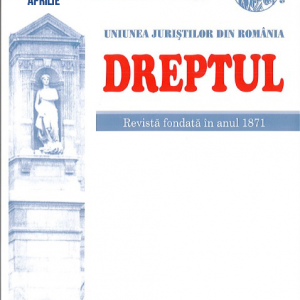 The study aims to analyze how the doctrine and jurisprudence, as well, have interpreted the provisions of Art. 32 of Law 18/1991, in over 20 years of applicability of the law’s wording mentioned. As it shall be ascertained, the law’s wording, improperly designed, can not be logically interpreted so as to produce the effects aimed at by the legislator, unless the restraint term of 10 years starts (has already started) its applicability since the issue date of the title deed.
The study aims to analyze how the doctrine and jurisprudence, as well, have interpreted the provisions of Art. 32 of Law 18/1991, in over 20 years of applicability of the law’s wording mentioned. As it shall be ascertained, the law’s wording, improperly designed, can not be logically interpreted so as to produce the effects aimed at by the legislator, unless the restraint term of 10 years starts (has already started) its applicability since the issue date of the title deed. -
 Law no. 1/2011 on the National Education, effective since February 2011, under Art. 289 regulated anew the regime on the legal relationships of employment after retirement age for teaching and research staff in higher education in Romania (public, private or religious). In this respect, the above mentioned bill, after having established the principle that this staff shall retire at the age of 65, sets to rights terms under which academics and researchers may continue their activity in higher education establishments, following retirement. Study hereby is to review these terms.
Law no. 1/2011 on the National Education, effective since February 2011, under Art. 289 regulated anew the regime on the legal relationships of employment after retirement age for teaching and research staff in higher education in Romania (public, private or religious). In this respect, the above mentioned bill, after having established the principle that this staff shall retire at the age of 65, sets to rights terms under which academics and researchers may continue their activity in higher education establishments, following retirement. Study hereby is to review these terms. -
 The existence of a state, situation or particular circumstance in which the offence is committed may ingrain it a character of legitimacy and in such circumstances it is lacking one of the essential features of the crime, the unjustified nature of the act committed. In the category of supporting causes which result in the removal of the essential trait of crime consisting in the anti-juridical character is also included the consent of the aggrieved party in respect with the commission of the crime set forth in the criminal law. In order to be ascertained as supporting cause, the aggrieved party’s consent must belong to the holder of the protected social value or to his legal or conventional representative, to be freely expressed, to be abreast with the time and to target a specific social value or values endangered by committing deliberate crimes. Consent of the aggrieved party does not preclude the unjustified character of the offence in case of criminal offenses against a person’s life, in the event of offenses whose justified effect is excluded by law, as well as in the event of criminal offences whose main passive entity is the state, and the aggrieved party acts as a secondary passive entity.
The existence of a state, situation or particular circumstance in which the offence is committed may ingrain it a character of legitimacy and in such circumstances it is lacking one of the essential features of the crime, the unjustified nature of the act committed. In the category of supporting causes which result in the removal of the essential trait of crime consisting in the anti-juridical character is also included the consent of the aggrieved party in respect with the commission of the crime set forth in the criminal law. In order to be ascertained as supporting cause, the aggrieved party’s consent must belong to the holder of the protected social value or to his legal or conventional representative, to be freely expressed, to be abreast with the time and to target a specific social value or values endangered by committing deliberate crimes. Consent of the aggrieved party does not preclude the unjustified character of the offence in case of criminal offenses against a person’s life, in the event of offenses whose justified effect is excluded by law, as well as in the event of criminal offences whose main passive entity is the state, and the aggrieved party acts as a secondary passive entity. -
 Fundamentally, all intentional crimes may be under continuous form, the forest offence being one of them. In practice, we come across various ways of committing forest offences, through a single action or multiple actions, which may meet, separately or conjunctively, elements of the crime of illegal cutting or theft of trees, but usually, when the criminal offence is committed in a longer period of time, twice or several times, without considering whether each single action meets the constitutive elements of the crime for which the defendant is prosecuted, Art. 41 para. 2 of the Criminal Code shall apply automatically. Authors’ analysis refers to the offence’s content unit, namely that the execution deeds of the same kind must submit each the content of the same offence. In legal practice it was decided that there is no requirement that the execution deeds should be identical, but each to cover the contents of the same offense, even if some of them correspond to the variant type and the other to the qualified one and, therefore, in the test case reviewed by the authors it was enough to evidence the existence of two or more trees cutting and stealing acts carried out at different intervals, each causing a damage which exceeds the threshold value for which the act stands for a crime and it was not required that for each of them, the damage caused and the value of timber, respectively, exceed at least 50 times the average price of a cubic meter of standing timber, on the offence’s finding date. Therefore, in order to determine the continuous nature of the act, it is required to administer evidence that should establish the volume of timber (for the offense of theft), and the amount of damage (for the cutting offence), for each action – execution deed, respectively its petty offence or criminal nature.
Fundamentally, all intentional crimes may be under continuous form, the forest offence being one of them. In practice, we come across various ways of committing forest offences, through a single action or multiple actions, which may meet, separately or conjunctively, elements of the crime of illegal cutting or theft of trees, but usually, when the criminal offence is committed in a longer period of time, twice or several times, without considering whether each single action meets the constitutive elements of the crime for which the defendant is prosecuted, Art. 41 para. 2 of the Criminal Code shall apply automatically. Authors’ analysis refers to the offence’s content unit, namely that the execution deeds of the same kind must submit each the content of the same offence. In legal practice it was decided that there is no requirement that the execution deeds should be identical, but each to cover the contents of the same offense, even if some of them correspond to the variant type and the other to the qualified one and, therefore, in the test case reviewed by the authors it was enough to evidence the existence of two or more trees cutting and stealing acts carried out at different intervals, each causing a damage which exceeds the threshold value for which the act stands for a crime and it was not required that for each of them, the damage caused and the value of timber, respectively, exceed at least 50 times the average price of a cubic meter of standing timber, on the offence’s finding date. Therefore, in order to determine the continuous nature of the act, it is required to administer evidence that should establish the volume of timber (for the offense of theft), and the amount of damage (for the cutting offence), for each action – execution deed, respectively its petty offence or criminal nature. -
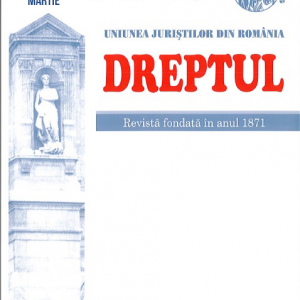 In this study, the author proves that the owners’ association does not have the legal capacity to acquire land intended to be used by the association members as parking lots or for ensuring access to the building where the individual dwellings of the members are situated. In this respect, it is claimed that the legal documents for the acquisition of such land by the association are subject to absolute nullity, since they infringe the principle of specialty of the legal entity’s usage capacity, established by art. 34, parag. 1 of Decree no. 31/1954 regarding individuals and legal entities. Consequently, it is concluded that the use of land having the above-mentioned destinations may be acquired by the owners in a condominium only by legal documents concluded in their own names.
In this study, the author proves that the owners’ association does not have the legal capacity to acquire land intended to be used by the association members as parking lots or for ensuring access to the building where the individual dwellings of the members are situated. In this respect, it is claimed that the legal documents for the acquisition of such land by the association are subject to absolute nullity, since they infringe the principle of specialty of the legal entity’s usage capacity, established by art. 34, parag. 1 of Decree no. 31/1954 regarding individuals and legal entities. Consequently, it is concluded that the use of land having the above-mentioned destinations may be acquired by the owners in a condominium only by legal documents concluded in their own names. -
 The analysis of the offenses against safety on public roads refers hereinafter to four other offenses (leaving the scene of an accident or changing or erasing evidence of the accident; preventing or hindering traffic on public roads; failure to comply with the tasks regarding the technical inspection or the performance of repairs and the performance of unauthorized works in the public road area), continuing our approach to present to the reader our personal option regarding this set of offenses, presently provided for in an emergency ordinance. Key words: vehicle, car, leaving the scene of an accident, changing the scene of an accident, erasing evidence of the accident, carrying out unauthorized works on the public road, preventing traffic, hindering traffic, poor performance of the technical inspection for vehicles and cars.
The analysis of the offenses against safety on public roads refers hereinafter to four other offenses (leaving the scene of an accident or changing or erasing evidence of the accident; preventing or hindering traffic on public roads; failure to comply with the tasks regarding the technical inspection or the performance of repairs and the performance of unauthorized works in the public road area), continuing our approach to present to the reader our personal option regarding this set of offenses, presently provided for in an emergency ordinance. Key words: vehicle, car, leaving the scene of an accident, changing the scene of an accident, erasing evidence of the accident, carrying out unauthorized works on the public road, preventing traffic, hindering traffic, poor performance of the technical inspection for vehicles and cars.
